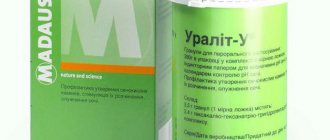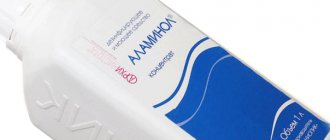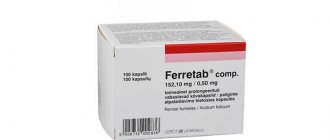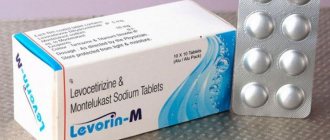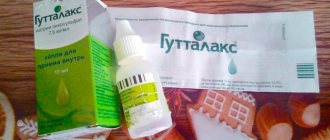Cyclosporine is a drug that suppresses the function of the immune system. Doctors prescribe it to treat autoimmune conditions, including rheumatoid arthritis and psoriasis, and to prevent organ rejection after transplantation.
Autoimmune conditions develop when the immune system mistakenly attacks healthy cells. The function of the immune system is to fight disease. Drugs that suppress the immune system are called immunosuppressive drugs
.
Indications for use of Cyclosporine
According to the instructions, Cyclosporine is prescribed simultaneously with other immunosuppressive drugs and glucocorticoids to prevent rejection after transplant surgery:
- Kidneys;
- Bone marrow;
- Hearts;
- Liver;
- Pancreas;
- Lungs.
Cyclosporine is also effective in the treatment and prevention of graft-versus-host disease in cases where previous treatment was carried out with other immunosuppressants.
In addition, Cyclosporine is prescribed according to the instructions for the treatment of:
- Autoimmune diseases;
- Endogenous active uveitis, threatening the vision of the middle or posterior part of the eye, caused by non-infectious etiology, in cases where standard therapy leads to unwanted side effects or does not produce results;
- Behçet's uveitis, especially with recurrent attacks of inflammation that affects the retina;
- Severe forms of atopic dermatitis;
- Steroid-dependent and steroid-resistant forms of nephrotic syndrome in remission;
- Severe persistent course of psoriasis;
- Severe forms of rheumatoid arthritis when it is impossible to use slow-acting antirheumatic drugs or their ineffectiveness.
Description of the medicine
Cyclosporine is a medicine that is used to suppress the body's immune defenses.
A decrease in the level of immunity is required by doctors during organ transplantation from one person to another - bone marrow, heart, kidneys and other internal organs. Since the body perceives the transplanted organ as foreign, the immune system tries to get rid of it with all its might. In this case, it is necessary to suppress the activity of the immune system.
Interesting to know
Immunosuppressive drugs are very important in the treatment of those diseases in which the body and its immune system, when the system is not functioning properly, begins to reject cells of its own body, because it perceives them as foreign.
Such diseases are called autoimmune and also require intervention in the functioning of the immune system in the absence of a therapeutic effect from drugs that simply eliminate the symptoms. During treatment, the manifestations of the disease are also eliminated and the risk of relapse is significantly reduced, and the time of remission is extended.
Cyclosporine works according to the following principle: the active component reduces the activity of the formation of T-lymphocytes (lymphocytes that provide cellular immunity and directly interact with antigens), as well as the activity of the formation of substances that also participate in the protective work of the immune system.
note
The effect of the medicine is reversible; the work of blood formation is not involved in this process and is not affected in any way. Another special feature is that the drug does not affect the functioning of other immune cells.
Cyclosporine is used not only in the listed areas, but is also widely known among ophthalmologists. In the form of drops, the drug helps to cope with dry eyes by activating the lacrimal gland, but pharmacists are still researching how this happens.
The drug Cyclosporine in the form of drops also has a strong effect on the immune system (it improves its functioning) and eliminates the inflammatory process. At the same time, various unpleasant sensations in the patient disappear, vision improves, and dry eyes disappear.
The medicine is available in the following forms:
- Capsules of various volumes and quantities in a blister.
- Solution for oral administration.
- Injection.
- Cyclosporine eye drops.
Contraindications
According to the instructions, cyclosporine is contraindicated for use:
- Against the background of malignant neoplasms;
- In pediatrics (up to one year);
- For precancerous skin diseases;
- In case of hypersensitivity to the active or auxiliary components of Cyclosporine, including polyoxyethylene castor oil in dosage forms containing it;
- During lactation.
Cyclosporine should be used with caution when:
- Current or recent chicken pox;
- Kidney and liver failure;
- Varicella zoster or other viral diseases (due to the risk of generalization of the process);
- Arterial hypertension;
- Hyperkalemia;
- Malabsorption syndrome.
Instructions:
Clinical and pharmacological group
14.015 (Immunosuppressive drug)
pharmachologic effect
Immunosuppressive drug. It is a cyclic undecapeptide. Has a selective effect on T-lymphocytes. Inhibits reactions of cellular and humoral immunity that depend on T-lymphocytes. Prevents the activation of lymphocytes by inhibiting the release of lymphokines. Does not suppress hematopoiesis and does not affect the functioning of phagocytic cells.
Pharmacokinetics
Cyclosporine is distributed mainly outside the bloodstream. In the blood, the active substance is present in plasma - from 33% to 47%, in lymphocytes - from 4% to 9%, in granulocytes - from 5% to 12% and in erythrocytes - from 41% to 58%. Binding to plasma proteins, mainly lipoproteins, is 90%. Metabolized to form about 15 metabolites.
Excreted mainly in bile; 6% is excreted by the kidneys mainly in the form of metabolites and only 0.1% unchanged. T1/2 from the body is approximately 19 hours, regardless of dose and route of administration.
Dosage
The treatment regimen depends on the indications and is determined individually. The choice of the initial dose, as well as the correction of the dosage regimen during treatment, is carried out taking into account clinical and laboratory parameters, as well as the values of the concentration of cyclosporine in the blood plasma, determined daily. The daily oral dose is 3.5-6 mg/kg.
Drug interactions
With simultaneous use of cyclosporine and potassium preparations or potassium-sparing diuretics, the risk of developing hyperkalemia increases; with antibiotics of the aminoglycoside group, amphotericin B, ciprofloxacin, melphalan, colchicine, trimethoprim - the risk of developing nephrotoxicity increases; with NSAIDs - the risk of side effects from the kidneys; with lovastatin or colchicine - the risk of developing muscle pain and weakness increases.
Various drugs may increase or decrease plasma concentrations of cyclosporine by inhibiting or inducing liver enzymes involved in the metabolism and elimination of cyclosporine. Drugs that increase plasma concentrations of cyclosporine: Erythromycin, clarithromycin, josamycin, doxycycline, chloramphenicol, roxithromycin, midecamycin, ketoconazole, fluconazole (apparently in high doses), itraconazole, diltiazem, nicardipine, verapamil, propafenone, amiodarone, carvedilol, metoclopramide ; oral contraceptives; danazol; methylprednisolone (high doses); allopurinol; amiodarone; cholic acid and its derivatives. Drugs that cause a decrease in the concentration of cyclosporine in plasma: barbiturates, carbamazepine, phenytoin; metamizole, nafcillin, sulfadimidine when administered intravenously; rifampicin, griseofulvin, terbinafine, octreotide, probucol, orlistat, troglitazone, preparations containing St. John's wort (hypericum perforatum).
It has been noted that cyclosporine reduces the clearance of prednisolone, and treatment with high doses of prednisolone may increase the concentration of cyclosporine in the blood.
Glibenclamide may increase the plasma concentration of cyclosporine at steady state.
When cyclosporine is used simultaneously with diuretics, the risk of developing renal dysfunction increases; with doxorubicin - an increase in the concentration of doxorubicin in the blood plasma and an increase in its toxicity; with methotrexate - an increase in the concentration of cyclosporine in the blood plasma, an increase in the incidence of nephrotoxicity and arterial hypertension; with melphalan (with intravenous administration in high doses) - severe renal failure may develop; with teniposide - decreased clearance of teniposide, increased T1/2, increased toxicity.
When used simultaneously with warfarin, the effectiveness of cyclosporine and warfarin decreases.
When using cyclosporine, ACE inhibitors, potassium supplements, and potassium-sparing diuretics, the risk of developing hyperkalemia increases.
When used simultaneously with enalapril, acute renal failure may develop; with nifedipine - increased gingival hyperplasia.
In patients receiving cyclosporine, there is a significant increase in the bioavailability of diclofenac, with the possible development of reversible renal impairment. The increase in the bioavailability of diclofenac is apparently associated with inhibition of its “first pass” metabolism through the liver.
With simultaneous use, cyclosporine reduces the clearance of prednisolone. When using prednisolone in high doses, it is possible to increase the concentration of cyclosporine in the blood. Methylprednisolone increases the concentration of cyclosporine in the blood.
When using cisapride in patients receiving cyclosporine, it is possible to increase its Cmax in the blood plasma and the rate of absorption.
It is possible to reduce the clearance of digoxin, colchicine, lovastatin, pravastatin, simvastatin, prednisolone, which can lead to increased toxic effects: glycoside intoxication when using digoxin and manifestations of toxicity of colchicine, lovastatin, pravastatin and simvastatin in relation to muscles, in particular the appearance of muscle pain, weakness, myositis and, in rare cases, rhabdomyolysis.
ACE inhibitors, antiviral drugs, aminoglycoside antibiotics, cephalosporins, amphotericin B, trimethoprim, co-trimoxazole, ciprofloxacin, melphalan increase the nephrotoxicity of cyclosporine.
With the simultaneous use of cyclosporine and quinidine and its derivatives, theophylline and its derivatives, it is possible to enhance the effects of the specified quinidine and its derivatives, theophylline and its derivatives.
When using imipinem in combination with cilastatin, the concentration of cyclosporine may increase, which can lead to symptoms of neurotoxicity (tremors, increased excitability).
When cyclosporine is used simultaneously with other immunosuppressants, the risk of developing infections and lymphoproliferative diseases increases.
Use during pregnancy and lactation
Experience with the use of cyclosporine during pregnancy is limited. Data obtained on organ transplant patients show that, compared with traditional methods of treatment, cyclosporine does not increase the risk of negative effects on the course and outcome of pregnancy.
Cyclosporine is excreted in breast milk. If use is necessary during lactation, breastfeeding should be stopped.
Experimental studies have shown that cyclosporine does not have a teratogenic effect.
Side effects
From the digestive system: possible feeling of heaviness in the epigastric region, loss of appetite, nausea (especially at the beginning of treatment), vomiting, diarrhea, pancreatitis, swelling of the gums, liver dysfunction.
From the central nervous system and peripheral nervous system: headache, paresthesia, convulsions are possible.
From the cardiovascular system: increased blood pressure.
From the urinary system: renal dysfunction.
Metabolism: increased concentrations of potassium and uric acid in the body.
From the endocrine system: excessive hair growth, reversible dysmenorrhea and amenorrhea.
From the musculoskeletal system: rarely - muscle spasms, muscle weakness, myopathy.
From the hematopoietic system: slight anemia; rarely - thrombocytopenia.
Indications
The need for immune suppression after kidney, bone marrow, or solid organ transplantation; rheumatoid arthritis with a high degree of activity and resistance to basic therapy; severe forms of psoriasis and atopic dermatitis when standard therapy is ineffective; nephrotic syndrome caused by pathology of the vascular glomerulus (minimal change nephropathy, focal and segmental glomerulosclerosis, membranous glomerulonephritis).
Contraindications
Uncontrolled arterial hypertension, acute infectious diseases, malignant tumors (except for malignant skin tumors in patients with psoriasis and atopic dermatitis), impaired renal function (except for patients with nephrotic syndrome).
special instructions
During treatment with cyclosporine, systematic monitoring of the functional state of the kidneys and liver, control of blood pressure, determination of the concentration of potassium in plasma (especially in patients with impaired renal function), as well as determination of the concentration of lipids in the serum (before the start of treatment and after the first month of treatment) are indicated. If the increase in the concentration of urea, creatinine, bilirubin, and liver enzymes in the blood is persistent, the dose of cyclosporine should be reduced. If arterial hypertension develops, antihypertensive treatment should be started. If serum lipids increase, consider reducing the dose of cyclosporine and/or using a special diet.
Excessive immune suppression should be avoided.
During therapy, vaccination should not be performed with live attenuated vaccines against mumps, measles, rubella, and polio.
When used simultaneously with drugs that can change the concentration of cyclosporine in the blood plasma, careful monitoring of this concentration and appropriate adjustment of the dosage regimen are necessary.
The simultaneous use of lipid-lowering drugs such as lovastatin and cytostatics such as melphalan is not recommended.
Medicines containing CICLOSPORIN
• ORGASPORIN® caps. 50 mg: 10 or 50 pcs. • CYCLORAL®-FS (CYCLORAL-FS) caps. soft 25 mg: 50 pcs. • PANIMUN BIORAL caps. 100 mg: 50 pcs. • EQUORAL caps. 100 mg: 50 pcs. • SANDIMMUN® conc. d/prep. r-ra d/inf. 50 mg/1 ml: amp. 10 pieces. • IMUSPORIN caps. 50 mg: 50 pcs. • EQUORAL caps. 25 mg: 50 pcs. • PANIMUN BIORAL caps. 25 mg: 50, 500, 1000 or 2500 pcs. • SANDIMMUN® NEORAL® caps. soft 10 mg: 60 pcs. • CICLOPREN solution for oral administration 100 mg/1 ml: vial. 50 ml • SANDIMMUN® NEORAL® caps. soft 50 mg: 50 pcs. • SANDIMMUN® NEORAL® caps. soft 25 mg: 50 pcs. • PANIMUN BIORAL caps. 50 mg: 50, 500, 1000 or 2500 pcs. • CYCLOPRENE caps. 25 mg: 50 pcs. • ORGASPORIN® caps. 25 mg: 10 or 50 pcs. • SANDIMMUN® NEORAL® (SANDIMMUN® NEORAL®) oral solution 100 mg/1 ml: vial. 50 ml per set with dosage kit • CYCLORAL®-FS (CYCLORAL-FS) caps. soft 50 mg: 50 pcs. • CYCLOPRENE caps. 100 mg: 50 pcs. • CICLOSPORIN HEXAL solution for oral administration 100 mg/1 ml: vial. 50 ml or 100 ml per set. with a graduated syringe and cannula • IMUSPORIN solution for oral administration 100 mg/1 ml: vial. 50 ml per set with graduated syringe • IMUSPORIN caps. 100 mg: 50 pcs. • CYCLOPRENE caps. 50 mg: 50 pcs. • RESTASIS eye drops 0.05%: 0.4 ml single-dose bottle 30 pcs. • CYCLOPRENE conc. d/prep. r-ra d/inf. 50 mg/1 ml: vial. 10 pieces. • IMUSPORIN caps. 25 mg: 50 pcs. • SANDIMMUN® NEORAL® caps. soft 100 mg: 50 pcs. • CYCLORAL®-FS (CYCLORAL-FS) caps. soft 100 mg: 50 pcs. • EQUORAL solution for oral administration 100 mg/1 ml: vial. 50 ml 5 pcs. • PANIMUN BIORAL solution for oral administration 100 mg/ml: fl. 50 ml per set with dosing syringe 1, 10 20 or 50 pcs. • CICLOSPORIN HEXAL caps. 25 mg: 50 or 100 pcs. • CICLOSPORIN caps. 50 mg: 5, 10, 25, 50 or 100 pcs. • EQUORAL caps. 50 mg: 50 pcs. • CICLOSPORIN caps. 100 mg: 5, 10, 25, 50 or 100 pcs. • CICLOSPORIN HEXAL caps. 50 mg: 50 or 100 pcs. • ORGASPORIN® caps. 100 mg: 10 or 50 pcs. • CICLOSPORIN caps. 25 mg: 5, 10, 25, 50 or 100 pcs. • CICLOSPORIN HEXAL caps. 100 mg: 50 or 100 pcs.
How to use Cyclosporine
As a rule, the treatment regimen with Cyclosporine depends on the indications and is determined by the doctor individually, taking into account laboratory and clinical parameters.
According to the instructions, Cyclosporine capsules are prescribed intravenously no later than 12 hours before organ transplant surgery at a dosage of 10-15 mg per 1 kg of body weight, divided into 2 doses.
After surgery, Cyclosporine is taken daily for several weeks in the same dosage, after which the amount of the drug taken is slowly reduced to a maintenance daily dose (2-6 mg per 1 kg).
Reduced dosages may be used if the drug is used in conjunction with other immunosuppressants and glucocorticoids.
When performing bone marrow transplant operations, Cyclosporine is used according to the same regimen, but in this case the maintenance dosage is 12.5 mg/kg per day, and in cases of malabsorption, higher doses are used.
Maintenance treatment with Cyclosporine should be continued for six months, after which the dosage of the drug is gradually reduced. As a rule, the total duration of treatment with Cyclosporine is one year, and in cases of rejection, treatment may continue longer.
In the treatment of endogenous uveitis and nephrotic syndrome, the initial daily dosage is 5 mg per 1 kg. Cyclosporine is taken until visual acuity improves and inflammation subsides. In cases where monotherapy does not bring the expected result, simultaneous use of Cyclosporine with small doses of glucocorticoids is possible.
When treating rheumatoid arthritis during the first 6 weeks of therapy with Cyclosporine, the daily dose is 3 mg per 1 kg of body weight, divided into 2 doses. The total duration of taking the drug should not exceed twelve weeks.
In the treatment of psoriasis and atopic dermatitis, the daily dose varies from 2.5 to 5 mg/kg, divided into 2 doses. After improvement, the dose of Cyclosporine is gradually reduced until completely discontinued.
Pharmacological properties of the drug Cyclosporine
Immunosuppressive agent; a cyclic polypeptide consisting of 11 amino acids. Suppresses the development of cell-type reactions, including immunity to the allograft, delayed-type skin allergic reaction, graft-versus-host reaction, allergic encephalomyelitis, arthritis caused by Freund's adjuvant, as well as T-lymphocyte-dependent antibody formation. At the cellular level, it blocks resting lymphocytes that are in the G0 or G1 phases of the cell cycle and suppresses the antigen-induced production and secretion of lymphokines (including interleukin-2 - T-lymphocyte growth factor) by activated T-lymphocytes. Cyclosporine appears to have a reversible effect on lymphocytes. Unlike cytostatics, it does not suppress hematopoiesis and does not affect the function of phagocytes. After oral administration, maximum plasma concentrations are achieved within 1–5 hours. Cyclosporine is distributed mainly outside the bloodstream; blood plasma contains 33-47%, lymphocytes - 4-9%, granulocytes - 5-12% and erythrocytes - 41-58%. In blood plasma, approximately 90% of cyclosporine is bound to proteins, mainly lipoproteins. Cyclosporine undergoes biotransformation, including various reactions, resulting in the formation of about 15 metabolites. Excretion from the body occurs mainly in bile and only 6% of the dose in urine (mainly in the form of metabolites). The half-life ranges from 6.3 hours in healthy individuals to 20.4 hours in patients with severe liver disease.
Drug interactions of Cyclosporine
When using Cyclosporine together with:
- Non-steroidal anti-inflammatory drugs - increases the risk of side effects from the kidneys;
- Amphotericin B, aminoglycoside antibiotics, colchicine, trimethoprim, ciprofloxacin, melphalan - the risk of developing nephrotoxicity increases;
- Potassium supplements – increases the risk of developing hyperkalemia;
- Lovastatin - increases the risk of developing weakness and muscle pain.
Brief overview of analogues
Cyclosporine can only be used as prescribed by a doctor, since unauthorized use of the drug can do much more harm than good; analogues can also be taken only after prior consultation with a specialist. They are selected individually, taking into account the characteristics of the patient’s body.
Analogues of the active component of the drug Cyclosporine are as follows:
- Cyclorin.
- Consensual.
- Cycloprene.
- Ecoral.
Analogues in action:
- Azathioprine.
- Krizanol.
- Auranofin.
Side effects of Cyclosporine
Cyclosporine, according to reviews, when used after transplantation can cause lymphoproliferative diseases, manifested as lymphoma and malignant skin diseases.
In some cases, in the presence of hypersensitivity to polyoxyethylene castor oil, Cyclosporine, according to reviews, can cause anaphylactic reactions in the form of:
- Acute respiratory distress syndrome;
- Skin rash;
- Shock;
- “Rushes” of blood to the skin of the face and upper body;
- Bronchospasm;
- Tachycardia;
- Reducing blood pressure.
According to reviews, other disorders of the body systems when using Cyclosporine include:
- Nephropathy;
- Increase in body weight;
- Gingival hyperplasia;
- Tremor;
- Hyperkalemia;
- Headache;
- Hypomagnesemia;
- Paresthesia;
- Pancreatitis, abdominal pain;
- Arrhythmias;
- Hyperlipidemia;
- Allergic reactions;
- nausea, loss of appetite, vomiting or diarrhea;
- Increased feeling of fatigue and weakness;
- Hepatotoxicity;
- Thrombocytopenia;
- Edema;
- Myasthenia gravis, muscle spasms and myopathy;
- Burning in the hands and feet;
- Impaired vision, consciousness or movement;
- Encephalopathy;
- Anemia;
- Dysmenorrhea, amenorrhea.
Overdose of the drug Cyclosporine, symptoms and treatment
Available experience with cyclosporine overdose is limited. Impaired renal function may develop, which is probably reversible. If there are appropriate indications, symptomatic treatment is carried out. Removal of cyclosporine from the body can be achieved through nonspecific measures, including gastric lavage. It should be borne in mind that cyclosporine is practically not excreted from the body during hemodialysis and hemoperfusion using activated charcoal.
List of pharmacies where you can buy Cyclosporine:
- Moscow
- Saint Petersburg
